The US and the UK Master’s Part / Chapter-wise Dissertation Writing Service

Then You’ve Certainly Reached the Right place
To teach is to Assess
Teaching is the achievement of a student through continuous improvement that affects their future development (Coe et al., 2014). Assessment is the method with which both teaching and learning are measured (Suskie, 2010). ‘To teach is to assess’ is where the teacher will measure the progress of a student by the use of assessments while also measuring how effective the teaching was. As a teacher who teaches both mathematics as well as science, I use assessment for learning (AFL) as the major part of my teaching. Assessment for me forms the link between my teaching and the students’ learning. AFL is also known as formative assessment and is one of the most effective methods to assess a child. In my class of thirty students I use questioning or mini tests in between lessons as a part of formative assessment.
Formative assessment is the process by which teaching as well as learning can be adjusted to better the outcome. This type of assessment is very commonly used to enhance the learning process of the child (Dunn & Mulvenon, 2009). However, it is my opinion that any learning can be formative. Accordingly, there also exists another common form known as summative assessment. While formative assessment takes place during the learning process, the summative assessment occurs after. This type basically forms the sum total of both the teaching and the learning after the process is complete (Schoenfeld, 2015). The types of formative assessments include question and answer sessions, instructions during learning and tests that are for providing feedback. The types of summative assessments include examinations such as finals or mid-terms, term papers and projects that are marked. While both have their advantages and disadvantages, the formative type of assessment has been considered superior. This is mainly because the assessment takes place during the learning process itself which gives more room for improvement as the lesson goes on rather than waiting for the end. This improvement is both for the teacher and the student. Hence, the entire process of imparting and gaining education is improved (Schoenfeld, 2015).

Researchers to mentor-We write your Assignments & Dissertation
With our team of researchers & Statisticians - Tutors India guarantees your grade & acceptance!
About serviceIn my opinion, I find that formative assessment is better as the progress of the child’s learning is measured constantly although both have their own sets of benefits and drawbacks. Summative assessments cannot give data on day to day classroom learning but rather helps with the effectiveness and the quantity of material learned in the longer term aspect. The main advantage is that it is convenient, easy to implement and cost effective. Formative assessment on the other hand is expensive, time consuming (also observed in my experience) and the outcomes are very subjective. The advantage, however, is that more in-depth knowledge and skills are developed, while in summative the knowledge is quite shallow (Bennett, 2010).
Due to this, I prefer to use formative assessment more. However, I have observed what other teachers use as well. I have found that they use summative tests at the end of a term along with the use of formative assessment in the course of the term and practical tests. On the other hand during my first placement, I only used formative assessment as I did not have much opportunity for practical tests. In my present second placement, I am trying to include practical tests along with formative assessment. Practical tests are quite important as I believe it prepares the student for more realistic environments. Practical tests are more vocational-based. This type of learning is usually associated with the learning of a topic or concept by way of practice (Shoesmith, 2008). This brings to mind “practice makes perfect”. I have observed in a class that the students learn faster and with more interest when practical lessons are put forth and the outcomes of the assessments too are much better. In the case of practical tests the assessments are usually summative. The main reason for this is to avoid partiality that is involved with the practical tests so that the measure of the accuracy of the outcome can be made more substantial (Shoesmith, 2008). Therefore I find that in the case of practical tests, summative assessment is more justified.
Practical skills are quite important as it helps the child realize the potential of practice combined with the use of what was taught in theory along with the scoring patterns. Other research (for example Mutvei & Mattsson, 2013; Ofoha, 2013; Shoesmith, 2008) also shows that practical knowledge leads to the development of skills that can help even with activities of day-to-day life and also prepares the child for a work environment. Therefore, research supports that practical skills are quite necessary for a more well-rounded development of a student.
But even so, I find that assessing the students of a science class, practical or otherwise is not very easy. There are many challenges that I do face. The main challenge is to limit the amount of science knowledge to the course curriculum. This is especially so in the case of formative assessment which gives children a more in-depth knowledge of the lesson. The other challenges that exist for assessment of science students are the religious and political boundaries that may limit the teaching of today’s cutting edge science, as religious teachings are more philosophical in nature. Another issue is preparing the students for standardised term exams. The rise in the use of the internet for information also interferes with both the teaching and learning (Anderman et al., 2012).
As mentioned earlier, I teach both math and science. I find it easier to assess math students than science. This is so, due to the challenges I have in the assessment. Of the mentioned, the major challenge is the use of information from the internet, where the student believes that only what she/ he has read is right. It is quite a task to explain to the child and change his/ her mind as to what the topic actually is and how it is to be read for the school curriculum. On the other hand, for the math students I make use of mini white boards (MWB). MWB are a very useful form of teaching as it helps the teacher effectively understand which student has understood which part of the lesson. From the child’s perspective, most are not ready to write sums down in paper and pen as they may get it wrong several times and the task of erasing and striking repeatedly does not appeal to them. MWB are helpful as they can erase and re-write until they get the right answer and hence they prefer using them. It is also my observation that students interest is increased an hence my assessment too (Ernst, 2014).
The need for assessment is driven by the need to know whether the learning outcomes of the lesson or the course have been met, to offer feedback to the students to further enhance their learning of the subject and performance, to be able to motivate students to take up more work relating to the subject, to support and guide the students, and finally to evaluate if the teaching itself was appropriate (Wiliam, 2013). The people involved in an assessment include the student, the teacher, and the institution. The assessment enables the student to channelise what has been taught to a specific set of questions or tasks. This further helps in retaining what was taught and correcting faults in understanding, if any. Assessments also form a way in which the effectiveness of teaching can be seen. For example, for a given topic if all the students of class score low/fail then it is due to the teaching which did not enable the students to understand the topic effectively. The institution too plays an important role especially in the case of providing well-read and trained teachers and also the necessary facilities conducting practical tests (Bennett, 2010).
Besides the assessments to be provided to the students, the teachers face many challenges. Some of the main challenges are: the lack of time, teaching new students, the lack of availability of proper resources, making the lesson plan appropriate, paying attention to each and every student in the class and marking each of their progress, giving feedback immediately, and helping the students with low academic performance (Anderman et al., 2012). While these challenges may be general to teachers across all subjects, there are more unique ones for teaching science and maths. Personally, I find teaching maths easier as it is more structured with the use of numbers, problems and set solutions. With science on the other hand, teaching can be more challenging as it involves making the students think strongly and in detail along aligning with the today’s world of cutting-edge science (Unesco, 2010). The main reason behind this in my experience is that overall students have been showing a lack of interest to learn science. Therefore, to first create that interest and then teach the curriculum science in a way that will impact the students is not an easy task. Besides this, I have also found certain differences in teaching girls and boys. In my experience, boys respond to teaching much better and show far more interest if practical work is involved than the girls. While girls on the other hand respond better to theoretical teaching. In view of this, the assessment practice too makes a difference (Kipkorir, 2013).
Both formative and summative assessments come with their own benefits and drawbacks. However, an integrated practice that uses both these assessments together can give the needed outcome. Integrative assessment uses assessment of learning and assessment for learning during the course of study (Crisp, 2012), wherein the students are assessed formatively while the learning is in progress and at the end of a term summative assessment is conducted. This form of an integrated assessment can be stated as good assessment practice as it takes the benefits of both methods integrated into one while nulling the drawbacks. For instance, if summative is considered as superficial learning and formative as a more in-depth form of learning, the integrative approach will ensure in-depth learning and cancel out the superficial learning while also conducting an assessment after the term. Therefore the learning is more wholesome. I too have noticed other teachers that use both a formative and summative approach and this is what I am aiming to incorporate into my teaching as well.
The assessment systems are very important, but it still asks the question if all the children are involved in the learning process. My experience has showed me that when formative assessment is used and children are encouraged to work in groups then all children are involved and show progress. But even then some children do not mingle and need personal attention. In such a case irrespective of what assessment is used, the teaching must be done on a personal level. It is the same case with pupils who score low. It is however difficult to say if all children make progress. The reason I believe this is because it depends on not only effective teaching, but also the inter-personal relation between the student and teacher. Good motivation and constant supportive effort from the teacher’s end will ensure that all children will progress. If these factors are available then to some extent all children can make progress, although some will progress faster than the others.
In conclusion, using an integrated approach to assessments can bring out the expected progress in children, while motivation and individual attention can ensure the progress of all. Teaching is a profession that requires constant updating. It can be challenging to change the teaching methods for each term or academic year, but it is the need of the hour to ensure that students are taught effectively especially for math and science subjects. Assessments therefore serve a dual purpose as it is a test for teachers as much as it is for the students. Furthermore, as integrated assessment that includes both formative and summative can prove to be the most beneficial (from my own experience), the future scope is the conduct of research into this integrated assessment so that it can become the mainstay of assessments for children globally.

Full Fledged Academic Writing & Editing services
Original and high-standard Content
Plagiarism free document
Fully referenced with high quality peer reviewed journals & textbooks
On-time delivery
Unlimited Revisions
On call /in-person brainstorming session
More From TutorsIndia
Coursework Index Dissertation Index Dissertation Proposal Research Methodologies Literature Review Manuscript DevelopmentREQUEST REMOVAL



